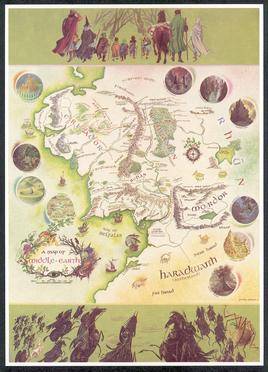Like many fantasy action-adventure RPGs, The Elder Scrolls (TES) series takes place in a “swords-and-sorcery” setting that borrows
heavily from the Lord of the Rings
saga. At the risk of giving both Tolkien and Bethesda short shrift, I offer the following chart as a summary of the correlation among the one real and the two fictional universes:
|
Reality
|
LOTR
|
TES
|
|
Physical
Universe
|
Eä
|
Mundus
|
|
Earth
|
Arda/Ambar/Imbar
|
Nirn
|
|
Eurasian
Continent
|
Middle Earth/Midgard/Endor
|
Tamriel
|
Tamriel, like Middle Earth, is a land that physically
resembles the Eurasian continent – complete with green forests, imposing mountain
ranges, foreboding wastelands, and so own.
The standard laws of physics apply as closely as each game’s graphics engine
can handle, and the natural elements are close approximations of their
real-world counterparts – gold comes from ore that must be mined, bears might
be found wandering in the woods, cabbages can be pulled from the ground to make
soup. In most aspects, Tamriel (like
Middle Earth) operates very much like Eurasia during the Iron and Middle Ages.
 |
| A map of Tolkien's Middle Earth featuring important scenes from the saga |
 |
| A map of Bethesda's Tamriel, featuring the settings of several TES games |
The immense popularity of The Elder Scrolls over the past eighteen years and the internal
complexity of the games’ storylines (five main titles and twelve subsidiary titles) have generated an extensive back story for
the entire series, patched together by the combined efforts of the games’
designers and fans. Most of the action in all of the titles in the series
takes place on the continent of Tamriel, although other geographical and mythological locations
are part of the copious lore of the games. After Arena, which allows the player to tour all of Tamriel, the
subsequent titles tend to limit themselves to one nation or another. Skyrim,
the focal point of this study, is located in the northernmost part of the
Tamriel landmass. Its topography,
climate, and native population is most reminiscent of Iron Age Scandinavia, and its predominate culture is a barely-fictionalized version of the Viking civilization (e.g. the Norse Valhalla becomes the Nordic Sovngarde), but with much greater overlap with other Tamrielic cultures.
The most obvious difference between our world and that of LOTR/TES is the presence of magic.
Although every culture, story, and game that includes magic has its own
set of rules and motifs, magic itself is a nearly universal concept and
does not require a lengthy explanation. Some of the more detailed
issues that arise from the use of magic in the TES universe, such as the
presence of magical creatures and divine entities, are addressed in
other parts of this study.
No comments:
Post a Comment